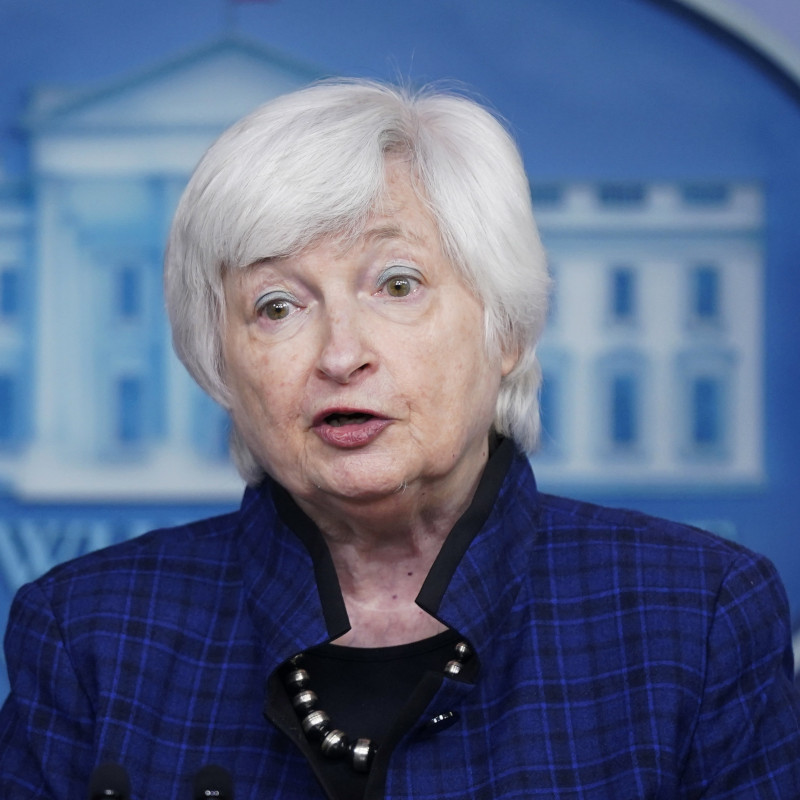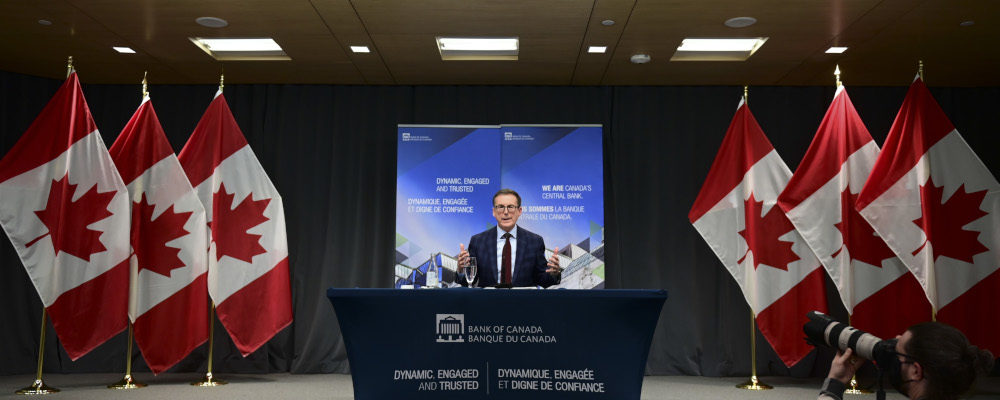We are exiting one of the most extreme economic crises of our lifetime, leaving central banks to strike a difficult balance between price control and a strong, sustained recovery.
This debate will be front and centre in the policy world for the foreseeable future. It will no doubt have major implications for public policy, including the role of central banks and the norms and expectations that we place on their objectives and actions.
The great financial crisis of 2008 had already put central bankers in the spotlight, but COVID-19 is an event of unparalleled economic magnitude. In the United States and Canada, both federal governments have pumped no less than 20 percent of their respective GDP into the economy since the beginning of the crisis.
MORE SIGNAL. LESS NOISE. THE HUB NEWSLETTER.
But extraordinary policy actions haven’t been limited to fiscal policy. In a bold move last August, the Federal Reserve announced it would implement a new inflation framework. Calling full employment “a broad-based and inclusive goal,” the new policy statement pledges that the U.S. central bank will make policy decisions based on “shortfalls” from full employment.”
In doing so, it’s effectively putting more weight on bolstering the labour market and signalling it’s willing to tolerate higher inflation for longer than it normally would. It doesn’t mean of course it will be tolerating higher than 2 percent inflation permanently, however. The Bank of Canada has adopted a similar approach. But unlike the Fed, the Bank of Canada has since signalled it would start tapering some bond purchases on secondary markets. It has done so twice now.
When and how central banks will start winding down this unprecedented accommodative monetary support has become a central question. It comes with huge implications for fiscal policy but more importantly for consumers (think mortgages and prices) and taxpayers (think deficit financing).
The current assumption from the Fed’s new framework is that rates would not be raised until 2024. This looks like an eternity considering the current pace of the recovery. If there was a need to scale down monetary support sooner, these adjustments could cause potential damage to financial stability and trigger some unexpected damage to the economy. As others have noted, this new monetary framework is not without risk.
Just consider the volatility that could ensue in financial markets. “Anchored expectations” are always paramount in controlling inflation. Treasury Secretary (and former Fed chair) Janet Yellen has downplayed these risks on a consistent basis. So far, the markets have not budged either, although the Fed has had to clarify its intentions more than once in the last few months.
One has to sympathize with the fact that policymakers are flying a bit blind.
Measuring inflation post-COVID is already bound to be controversial. Surging input prices, spreading labour shortages, extremely loose fiscal policies, pervasive inventory shortfalls, and most importantly an outcome-based monetary policy (versus a forecast-based one) are creating real apprehensions on whether current inflation is in fact “transitory”, which it may well be. Secular stagnation has been with us for some time after all.
Modern economic analysis has come to rely (excessively in my view) on models. Models are only as good as their underlying assumptions. In a time like the one we are living through, one has to sympathize with the fact that policymakers are flying a bit blind.
The estimates that they’re relying on are highly complex and depend on a series of assumptions. In particular, they involve identifying a point in the past when the economy was at full capacity utilization and employment, along with an underlying trend growth rate, and then projecting output, employment and prices forward. As John Kemp recently observed: “Estimating the amount of cyclical slack in the economy as a result of the epidemic, lockdowns, trade wars and the general business cycle downturn, is more of an art than a science.”
Many other questions remain:

1. Output gap in a new labour market: last quarter, U.S GDP was back at pre-pandemic level ($19 trillion) but with 8.5 million fewer people in the labour force. This would mean considerable gains in labour productivity, or higher output per worker, during the pandemic. This could also imply a more permanent structural disruption of the labour market mainly due to technological adoption (accelerated by COVID). Given the new emphasis on linking monetary policy to labour market outcomes, this is an issue to watch closely.
2. Household savings: CIBC Economist Royce Mendes has recently observed household savings are somewhat of a wild card in the recovery. Household savings have risen across the country. In March, the Bank of Canada estimated that it amounted to $180 billion but it probably stands closer to a quarter of a trillion dollars now. What Canadians will decide to do with these savings will have an impact on the recovery and the conduct of monetary policy. It could lead to a more robust and faster surge of demand than some forecasts suggest.
3. Central banks tolerance to overshooting the inflation target: we know central banks have the tools to rein in inflation. What is less clear is how much overshooting they are willing to tolerate. If the central bank is determined to stimulate the economy until the production and employment gaps have been closed fully, it could have to accept a significant overshooting in prices.
As a colleague recently half-jokingly said to me: “Central bankers are under pressure these days to show that they care about things other than just inflation.”
And the situation isn’t bound to get any easier. One of the main challenges they face is that they have more or less boxed themselves into a new, more constrained framework that implies expansionary monetary policy will be there for a very long time.




